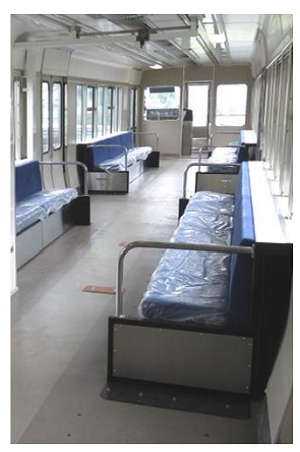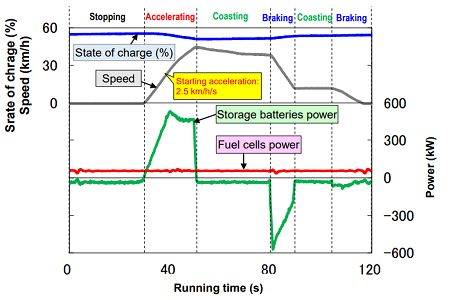17. High Performance Fuel Cell Hybrid Railway Vehicle
A fuel cell hybrid railway vehicle which is close to a practical use has been developed (Fig. 1). The vehicle secures passengers' space and has an acceleration performance equivalent to electric motive units (starting acceleration: 2.5km/h/s), which will contribute to reduce ground electric facilities in electrified sections in the future.
To achieve such a high performance, the total power capacity of fuel cells and storage batteries was increased to 690 kW. That was improved by 50% compared to the previous one and was the power required for operation on a flat section. Also, the main circuit equipment had to be downsized to be able to mount under the vehicle floor.
To achieve this purpose, the power capacity ratio of the storage batteries compared to the fuel cells was increased in order to make the configuration superior to downsizing whole main circuit equipment.
Furthermore, as for the fuel cells, by introducing fuel cell stacks with high current density and downsizing cooling equipment, the volume of the equipment per output could be reduced by 20% compared to the previous one. As for the power converters, by integrating the multiple power conversion components and using low-loss semiconductors (SiC), the volume of the equipment could be reduced by 45% compared to the previous one.
By these efforts, passengers’ space was secured (Fig. 2).
Also, in test runs on our test track, it was demonstrated that the vehicle ran with an acceleration performance equivalent to electric motive units by using the hybrid power of fuel cells and storage batteries (Fig. 3).
This study result contributes to a CO2 reduction of railway vehicles and a reduction of ground electric facilities in electrified sections, which leads to a saving on maintenance work.
Part of this study was implemented with a subsidy from the Ministry of Land, Infrastructure, Transport and Tourism for railway technical development.



